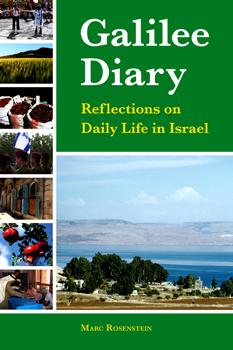3/22/13 Friday – The Rhythm of Jewish Time
HTTP/1.1 200 OK Server: nginx Content-Type: text/html; charset=utf-8 X-Drupal-Cache: HIT Etag: “1363968052-0″ Content-Language: en Link: ; rel=”shortlink”,; rel=”canonical” X-Generator: Drupal 7 (https://drupal.org) Cache-Control: public, max-age=10800 Expires: Sun, 19 Nov 1978 05:00:00 GMT Vary: Cookie,Accept-Encoding Last-Modified: Fri, 22 Mar 2013 16:00:52 GMT X-AH-Environment: prod Content-Length: 99142 Date: Fri, 22 Mar 2013 16:06:42 GMT X-Varnish: 1784357250 Age: 0 Via: 1.1 varnish Connection: keep-alive X-Cache: MISS A Maundy Thursday Seder | Reform Judaism
By Dr. Madelyn Mishkin Katz , 3/22/2013
My parents raised my brothers and me to have a strong identity as Reform Jews. We were clear about our Jewish ancestry. We fully embraced our connection to and responsibility toward synagogue life. We appreciated all the rituals we celebrated as a Jewish family. At the same time, though, they taught us to not be afraid of “the other”–those of different races, ethnic backgrounds and, especially, different religions. In fact, our respect and appreciation for the “the other” helped to strengthen our identity as Jews. So when it came time for celebrating Pesach, our seder was a perfect reflection of that philosophy.
My father led the seder and, while he was definitely a “non-believer,” he managed to highlight the important traditions and the need for us to tell the story and remember the Exodus. We did it, however, “Mishkin–style!”
We used the old Chase and Sanborn Haggadah. My father “loved” all the “thees and thous” but his absolute favorite was the verse from Hallel–”Ye mountains, that ye skip like rams; Ye hills, like young sheep?” As kids we laughed, as adults we added our own humorous commentary and, in our own homes today, even though we use totally different Haggadot, my brothers and I find ways to insert that quote somewhere in our own seders.
I now have the copies of those Haggadot. And every year, as I prepare to lead my own family seder, I look back at the “ancient” Haggadah and marvel at how my father did his own bit of “outreach,” always including everyone at the seder–Jew and non-Jew alike–because making the connection for anyone at the table was far more important than the blood line.
The night before the seder he would sit in his favorite chair, his copy of the haggadah in hand, and would assign parts for everyone–scratching out the names from the last year and inserting the new names. Year after year he added the names of the non-Jewish girlfriends my cousins would bring with them, making sure that they would be comfortable with the parts to which they were assigned. No one was to be embarrassed by their lack of knowledge–and all they remember was that “Uncle Al” was so accepting and welcoming. He added his own unique humor to the seder but never watered down the importance of the ritual lest it lose its integrity. He made the Jewish experience one that was welcoming for all. No one–Jew or non-Jew–left feeling like a stranger or an “other.”
A seder in our home wasn’t a seder unless there were a few Jesuit priests present. We were as close to the Jesuits as we were to the rabbi in town. I will never forget the image of Father Jack Fahey–wearing both his priest’s collar and a green yarmulke. But our seder connection with the Jesuits did not stop there. One year our family was invited to lead a seder at Gonzaga Retreat House, for 100 nuns and all of the Jesuits who lived there–and to do it on Maundy Thursday, also known as Holy Thursday, during Easter week. It was the ultimate in sharing of personal religious customs and working to break down the barriers between Jews and Christians. The local paper put us on the front page, with a picture of my father–the man who would fall asleep in Temple–wearing a yarmulke and holding the Chase and Sanborn Haggadah, all while standing in front of a crucifix. And the nuns kept going back into the kitchen for more charoset–which they thought was “Waldorf salad!”
My parents taught us not to be afraid of the “other.” Instead we could celebrate our Jewish identity to the fullest while inviting “others” to participate. We invited guests into our sukkah (OK, it was for a Republican Party Kaffee Klatch!), and shared in our Hanukkah celebration while also playing Santa Claus for our Gentile friends in town. And, of course, we led our famous Maundy Thursday seder–just another of the Mishkin family Jewish traditions!
Dr. Madelyn Mishkin Katz is associate dean at HUC, Jack H. Skirball Campus, Los Angeles, California.
Submit a blog post
Share your voice: ReformJudaism.org accepts submissions to the blog for consideration.
HTTP/1.1 200 OK Server: nginx Content-Type: text/html; charset=utf-8 X-Drupal-Cache: HIT Etag: “1363968052-0″ Content-Language: en Link: ; rel=”shortlink”,; rel=”canonical” X-Generator: Drupal 7 (https://drupal.org) Cache-Control: public, max-age=10800 Expires: Sun, 19 Nov 1978 05:00:00 GMT Vary: Cookie,Accept-Encoding Last-Modified: Fri, 22 Mar 2013 16:00:52 GMT X-AH-Environment: prod Content-Length: 99142 Date: Fri, 22 Mar 2013 16:06:42 GMT X-Varnish: 1784357250 Age: 0 Via: 1.1 varnish Connection: keep-alive X-Cache: MISS A Maundy Thursday Seder | Reform Judaism
By Dr. Madelyn Mishkin Katz , 3/22/2013
My parents raised my brothers and me to have a strong identity as Reform Jews. We were clear about our Jewish ancestry. We fully embraced our connection to and responsibility toward synagogue life. We appreciated all the rituals we celebrated as a Jewish family. At the same time, though, they taught us to not be afraid of “the other”–those of different races, ethnic backgrounds and, especially, different religions. In fact, our respect and appreciation for the “the other” helped to strengthen our identity as Jews. So when it came time for celebrating Pesach, our seder was a perfect reflection of that philosophy.
My father led the seder and, while he was definitely a “non-believer,” he managed to highlight the important traditions and the need for us to tell the story and remember the Exodus. We did it, however, “Mishkin–style!”
We used the old Chase and Sanborn Haggadah. My father “loved” all the “thees and thous” but his absolute favorite was the verse from Hallel–”Ye mountains, that ye skip like rams; Ye hills, like young sheep?” As kids we laughed, as adults we added our own humorous commentary and, in our own homes today, even though we use totally different Haggadot, my brothers and I find ways to insert that quote somewhere in our own seders.
I now have the copies of those Haggadot. And every year, as I prepare to lead my own family seder, I look back at the “ancient” Haggadah and marvel at how my father did his own bit of “outreach,” always including everyone at the seder–Jew and non-Jew alike–because making the connection for anyone at the table was far more important than the blood line.
The night before the seder he would sit in his favorite chair, his copy of the haggadah in hand, and would assign parts for everyone–scratching out the names from the last year and inserting the new names. Year after year he added the names of the non-Jewish girlfriends my cousins would bring with them, making sure that they would be comfortable with the parts to which they were assigned. No one was to be embarrassed by their lack of knowledge–and all they remember was that “Uncle Al” was so accepting and welcoming. He added his own unique humor to the seder but never watered down the importance of the ritual lest it lose its integrity. He made the Jewish experience one that was welcoming for all. No one–Jew or non-Jew–left feeling like a stranger or an “other.”
A seder in our home wasn’t a seder unless there were a few Jesuit priests present. We were as close to the Jesuits as we were to the rabbi in town. I will never forget the image of Father Jack Fahey–wearing both his priest’s collar and a green yarmulke. But our seder connection with the Jesuits did not stop there. One year our family was invited to lead a seder at Gonzaga Retreat House, for 100 nuns and all of the Jesuits who lived there–and to do it on Maundy Thursday, also known as Holy Thursday, during Easter week. It was the ultimate in sharing of personal religious customs and working to break down the barriers between Jews and Christians. The local paper put us on the front page, with a picture of my father–the man who would fall asleep in Temple–wearing a yarmulke and holding the Chase and Sanborn Haggadah, all while standing in front of a crucifix. And the nuns kept going back into the kitchen for more charoset–which they thought was “Waldorf salad!”
My parents taught us not to be afraid of the “other.” Instead we could celebrate our Jewish identity to the fullest while inviting “others” to participate. We invited guests into our sukkah (OK, it was for a Republican Party Kaffee Klatch!), and shared in our Hanukkah celebration while also playing Santa Claus for our Gentile friends in town. And, of course, we led our famous Maundy Thursday seder–just another of the Mishkin family Jewish traditions!
Dr. Madelyn Mishkin Katz is associate dean at HUC, Jack H. Skirball Campus, Los Angeles, California.
Submit a blog post
Share your voice: ReformJudaism.org accepts submissions to the blog for consideration.




